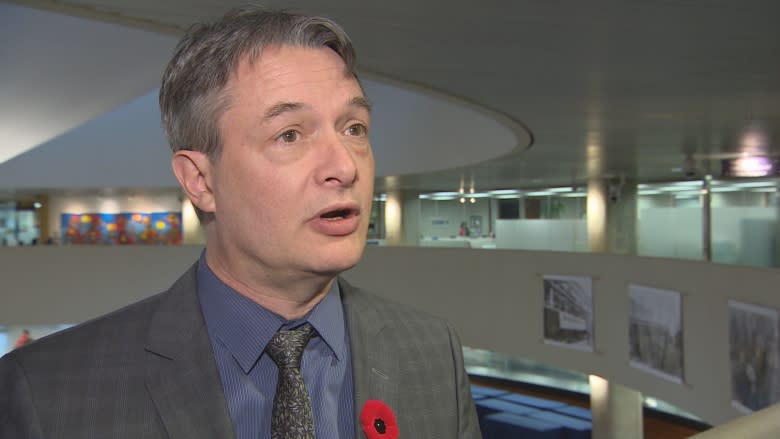Toronto the resilient: how the city plans to adapt to climate change in 2050
This week, the city unveiled an ambitious plan to achieve an 80 per cent reduction in greenhouse gas emissions by 2050, following through on a commitment first made by city council in 2007.
Called TransformTO, the plan is projected to cost citizens, businesses, and all three levels of government $60 billion in 2017 dollars, and will require that Torontonians change the way they live, build, and get around.
With just 33 years to get there, what would a city that's successfully reduced emissions by such a large margin look like?
Coun. Gord Perks, former chair of the city's Subcommittee on Climate Change, pulled no punches when describing how dramatic this transformation would be.
"Lifestyles will change," he told CBC Toronto.
"The thing about climate change is that either we change voluntarily or the planet is going to change our lives for us."
Where we live
In the plan's vision of Toronto in 2050, communities will be significantly denser and more walkable, and many people will live in apartments instead of houses.
"We will live in much more compact neighbourhoods where more of the services and jobs and recreational activities will be right there in your own neighbourhood," said Perks.
"We will probably live in much smaller arrangements than we do now, but that's already happening because people are being priced out of single-family dwellings," he added.
You'll also have significantly fewer things in your house: the report describes the people of 2050 using fewer "disposable products" thanks to the sharing economy and local hubs that lend, take back and re-use daily items.
Homes will use just 20 per cent of the energy they used in 2015, and much of the energy for heating and cooling comes from the practice of collecting waste heat and converting it into power.
All new buildings are designed and built to produce near-zero greenhouse gases, and all older ones have been aggressively retrofitted to be as close to that as possible.
As you walk down the street, you'll spot solar panels on commercial buildings generating even more energy.
One thing you won't see: garbage cans. By 2050, the city aims to divert 95 per cent of waste from landfills to recycling and reuse programs.
How we move
With services, parks, theatres, work, and schools close at hand, people won't be making long trips in the same way that they do now.
"We will spend less time in travel because we are going for compact urban form," said Perks.
When you do have to make a longer trip, it won't start with a stop at your local gas station: gasoline and diesel-fuelled vehicles will be a thing of the past, with the report calling for 100 per cent of public transit and personal vehicles to use low or zero-carbon energy sources.
While some may make the jump to electric cars, the report also calls for a broader adoption of transit, predicting that "new subway lines and enhanced bus and train systems" will ease the transition.
Meanwhile, three-quarters of short trips will be conducted on foot or using "safe and pleasant" bicycle lanes, but if you have a longer way to go, "affordable, shared electric vehicles are easily accessible for all ages," says the report.
Making the case for change
Mark Bekkering, manager of policy and research for the city's environment and energy division, said the plan isn't as out there as it sounds.
"It's achievable with existing technology and some behaviour change. We've invented solar panels, we've invented electric cars," he said.
Bekkering also argued that the lifestyle shift proposed in the report brings with it a "whole other range of quality of life benefits:" for example, healthier people, cleaner air, and a number of new jobs.
Perks points out how much life has changed in Toronto in the last 30 years as evidence that the plan foresees a manageable transformation at a reasonable pace.
"We will either change our lifestyle to match the future that's described in this plan or there will be devastating consequences that will make our lifestyle much worse than it is now," he said.
The report will go to the city's Parks and Environment Committee next week, and if approved, will go to city council next month.



